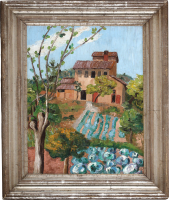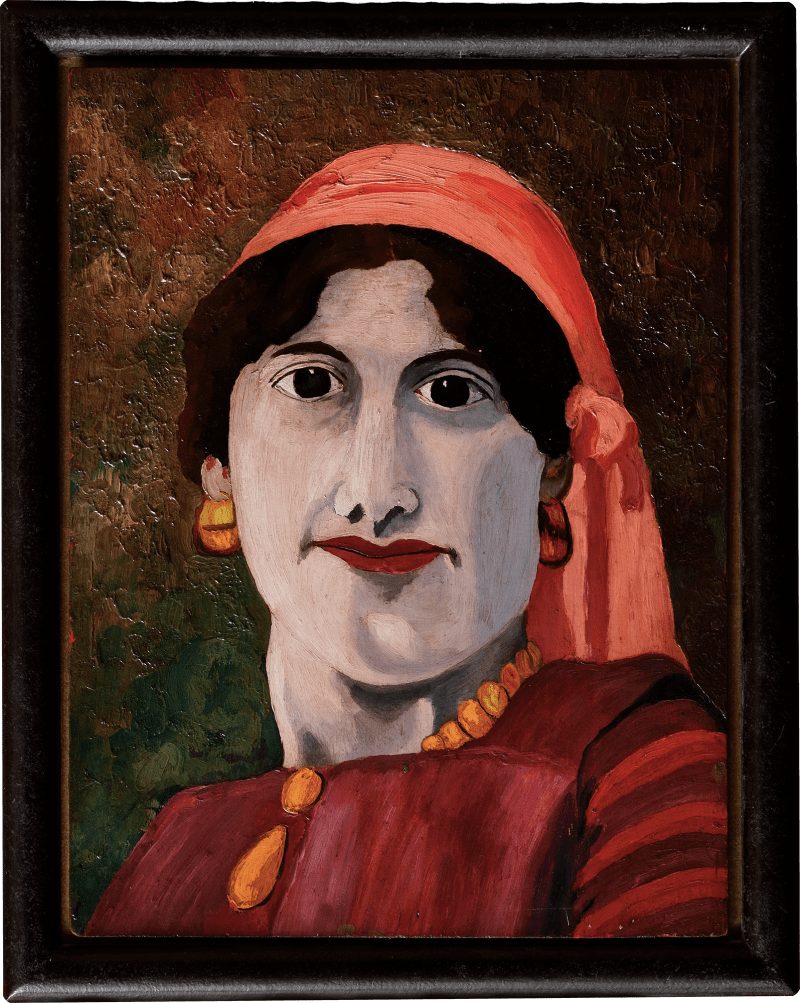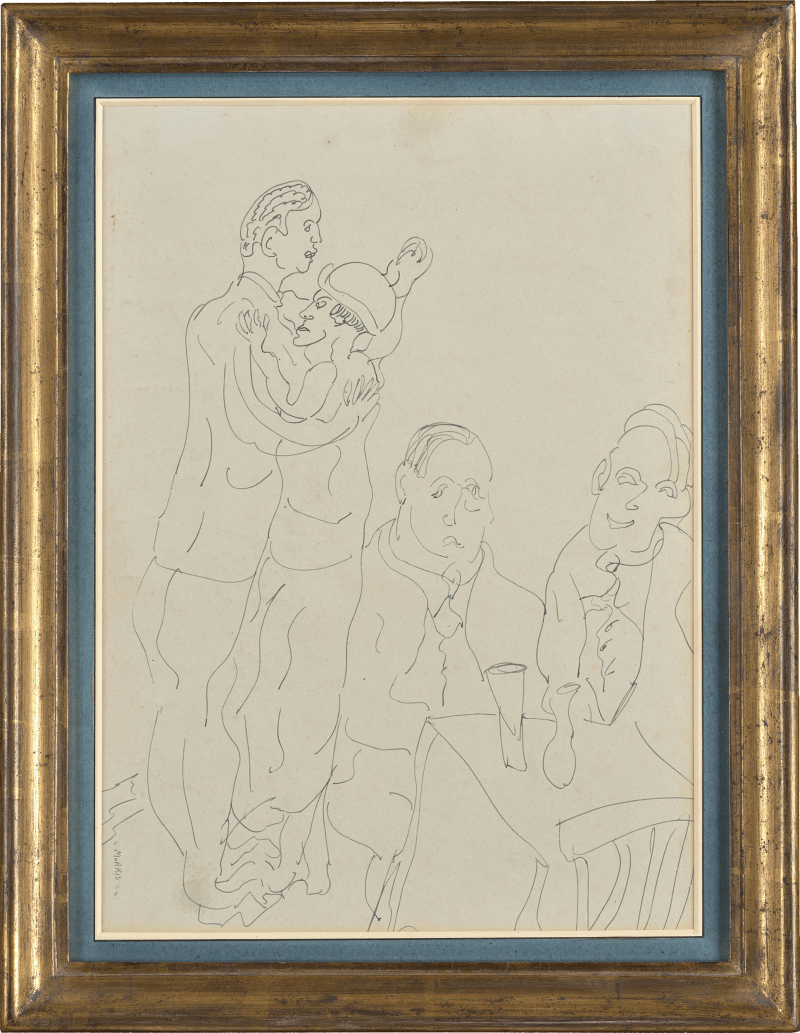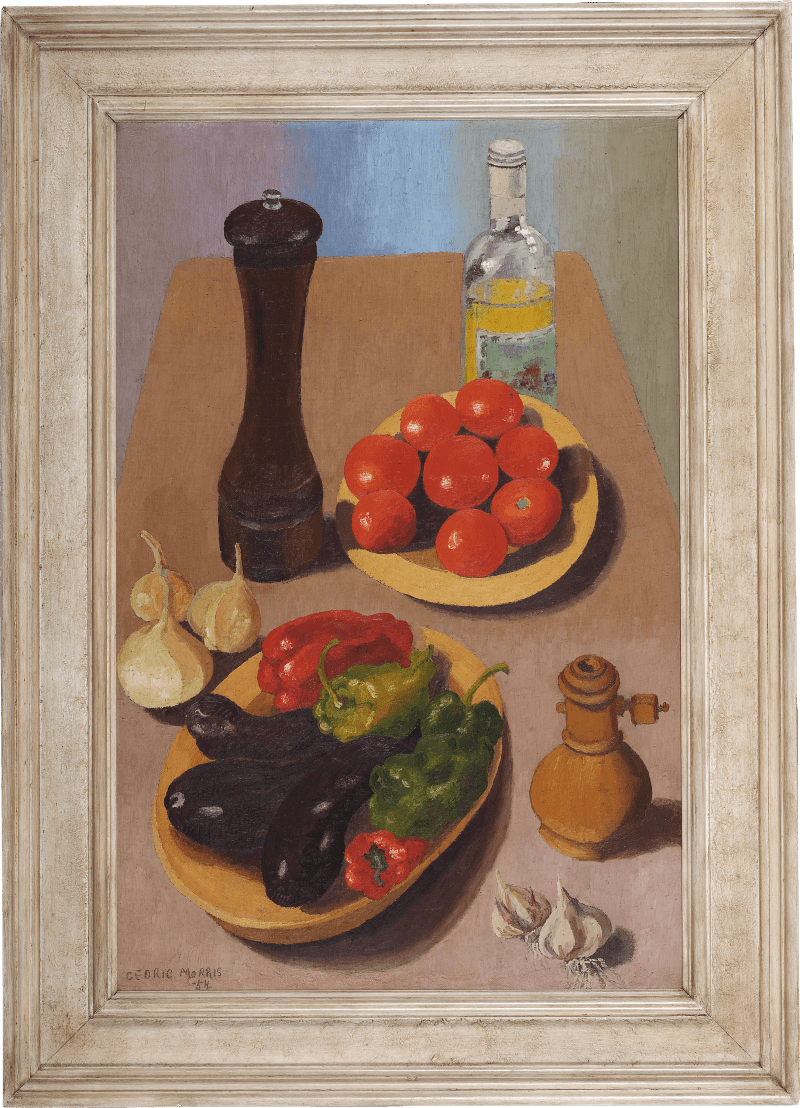From 1920 to 1926 Cedric Morris and his partner Arthur Lett-Haines were based in Paris, but travelled extensively around Europe mixing with continental avant-garde artists and writers. The present work was painted in Italy, during a trip that saw the couple travel through Tuscany, visiting towns such as San Gimignano and Volterra.
Painted in 1922, this vibrant landscape demonstrates Morris’s direct application of paint, resulting in the distinctive surface texture for which he would become renowned. From the cabbages in the foreground, executed in bold swirls of paint, to the vertical strokes of paint that govern the sky, this work exemplifies the artist’s fusion of textural range and flattening of perspective.
When travelling throughout Europe in these early years, Morris was often drawn to gardens and characterful buildings. He delighted in juxtaposing luscious green flora and fauna against baked stone structures and in some instances, as seen here, the forms are lyrically blended together through sweeping strokes of thick...
From 1920 to 1926 Cedric Morris and his partner Arthur Lett-Haines were based in Paris, but travelled extensively around Europe mixing with continental avant-garde artists and writers. The present work was painted in Italy, during a trip that saw the couple travel through Tuscany, visiting towns such as San Gimignano and Volterra.
Painted in 1922, this vibrant landscape demonstrates Morris’s direct application of paint, resulting in the distinctive surface texture for which he would become renowned. From the cabbages in the foreground, executed in bold swirls of paint, to the vertical strokes of paint that govern the sky, this work exemplifies the artist’s fusion of textural range and flattening of perspective.
When travelling throughout Europe in these early years, Morris was often drawn to gardens and characterful buildings. He delighted in juxtaposing luscious green flora and fauna against baked stone structures and in some instances, as seen here, the forms are lyrically blended together through sweeping strokes of thick paint. The effect, in this case, is heightened by Morris’s use of a smooth panel support as opposed to a textured canvas, which has resulted in a more fluid surface and greater intermingling of colour and form.
During the early 1920s, whilst developing his direct and representational painting method, Morris was also experimenting with abstraction. Although he later abandoned this approach, it was immensely formative in the development of his artistic trajectory. In 1928, when Morris was fully committed to figurative painting, he still maintained that ‘From natural objects, I obtain line for line’s sake, colour for colours sake, and form for form’s sake.’[1]
[1] Cedric Morris, (1928) Design and Art. Art League’s of Service; quoted in Richard Morphet, (1984) Cedric Morris. London: Tate Gallery.











